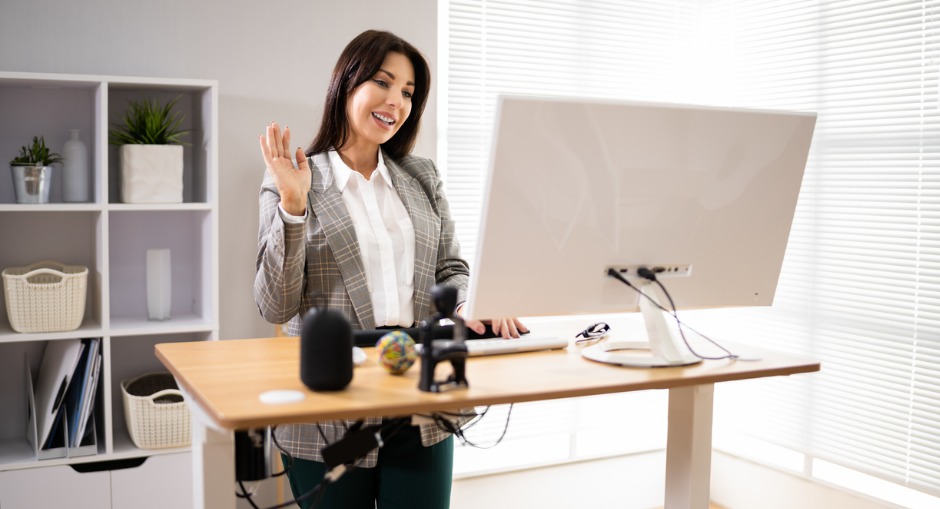
A height adjustable desk isn’t a new piece of equipment that you set up and start at for eight hours on day one. If you have been sitting at a desk for many years, it’s going to take your body time to adjust to the new way of working, no matter how fit or active you might be!
Tips for Adjusting to a Sit Stand Desk
Some people will ‘break in’ their new height adjustable desk quickly, but for others it will take weeks to feel like they are used to standing while working. Here are our tips for making a smooth transition.
#1 Alternate Between Standing and Sitting
This tip is more than temporary. Research shows the most health benefits are realised by alternating the height of the desk throughout the day so you sit and stand. Standing for long periods when you aren’t used to it can give you sore legs, feet, hips and back - particularly if you have a pre-existing injury. Start off small and sit as soon as you feel tired. As your body gets used to standing, you will find that you can stand comfortably for longer.
After no more than a couple of hours of standing, lower the desk so you can take the weight off for a similar length of time, before putting the desk back up to stand again. Don’t feel like you’re cheating - alternating between positions is the recommended way to use sit stand desks.
#2 Use an Anti-Fatigue Mat
Using an anti-fatigue mat at your height adjustable desk can make all the difference to your feet and legs at the end of a long work day. A softer surface cushions your feet, making it more comfortable to stand for longer periods. Feeling comfortable is important for maximising your productivity levels. A mat can also reduce fatigue by encouraging your legs to make subtle movements. When it comes time to take a seat, pull your chair onto the mat and continue working.
#3 Check the Angle of Your Keyboard
Your arms and wrists are at a different angle when you’re standing compared to sitting, which may require you to change the angle of your keyboard for maximum comfort. An ergonomic keyboard can help ensure that you are typing ergonomically, as it allows you to quickly tilt the keyboard up when you’re standing and tilt it down when seated. Whether you're standing or sitting, your wrists should be straight (not angled) when typing.
#4 Consider a Wrist Support
If you’re a heavy mouse user, you may find that your current mouse isn’t as comfortable to use in the standing position. A wrist rest is a padded surface on the desk that reduces the pressure on the wrist that does most of your mouse work.
#5 Keep Adjusting Your Workstation Until it’s Right
It will take time to find the right workstation setup in your new standing position. You’ll need to find the right height for your desk, which is around the same level as your elbows. You may decide that your monitor needs to be raised so it’s at your ideal eye level. The light may be different when standing, so you may need to tilt the monitor to ensure there’s no glare on the screen. With some patience, you’ll soon find the ideal workstation setup.
#6 Take Regular Breaks
Just because you’re changing the desk height and alternating between standing and sitting, it doesn’t mean you should skimp on regular rest breaks throughout the day. Taking a seat isn’t a break if you’re still looking at the screen. Leave your workstation to give your eyes a break. A walk around the office or block can get the blood circulating and clear your head so you’re ready for the next block of work.
If you have any queries about standing desks or accessories, call us on 9240 7066 or
contact us online.